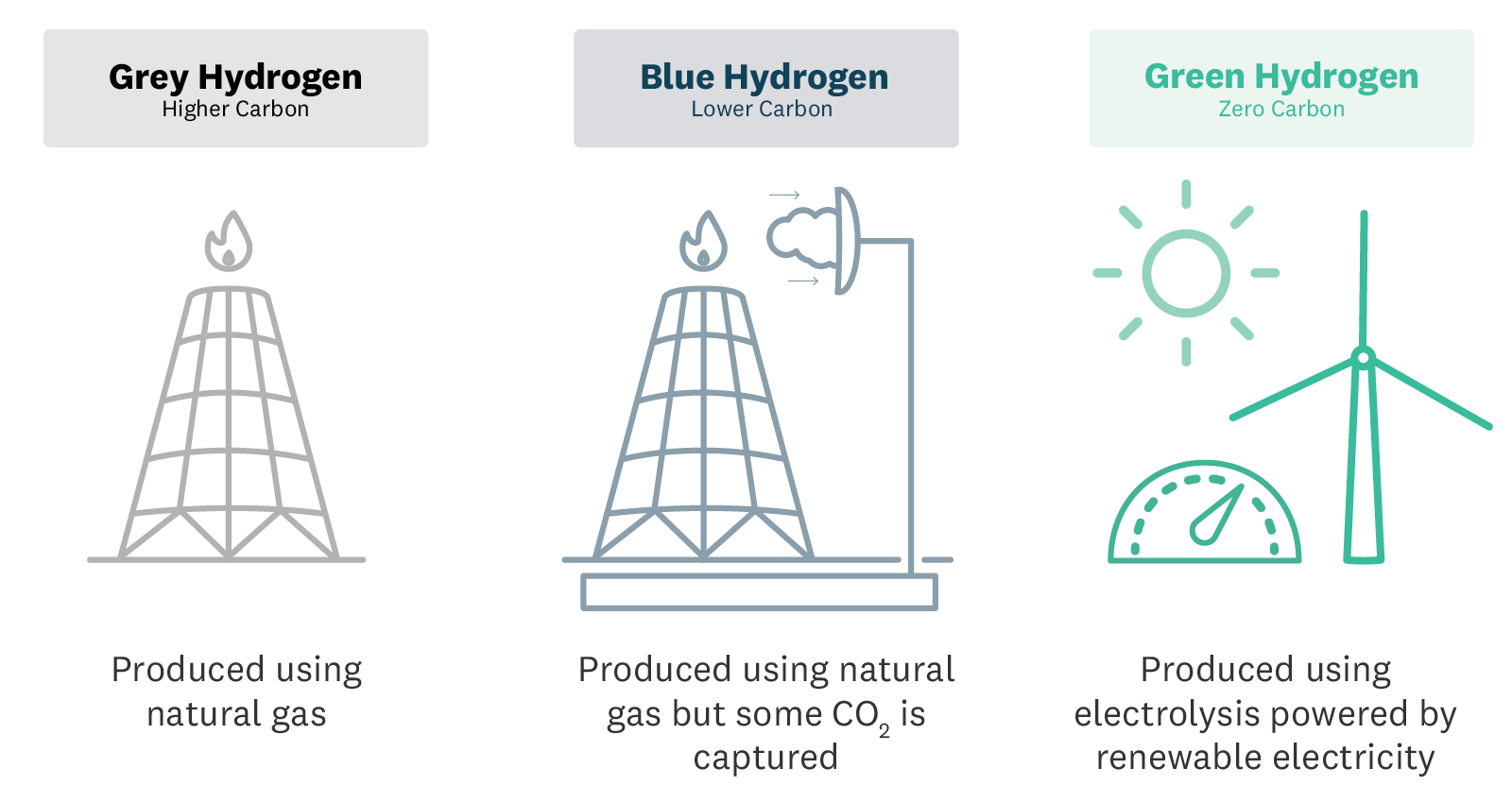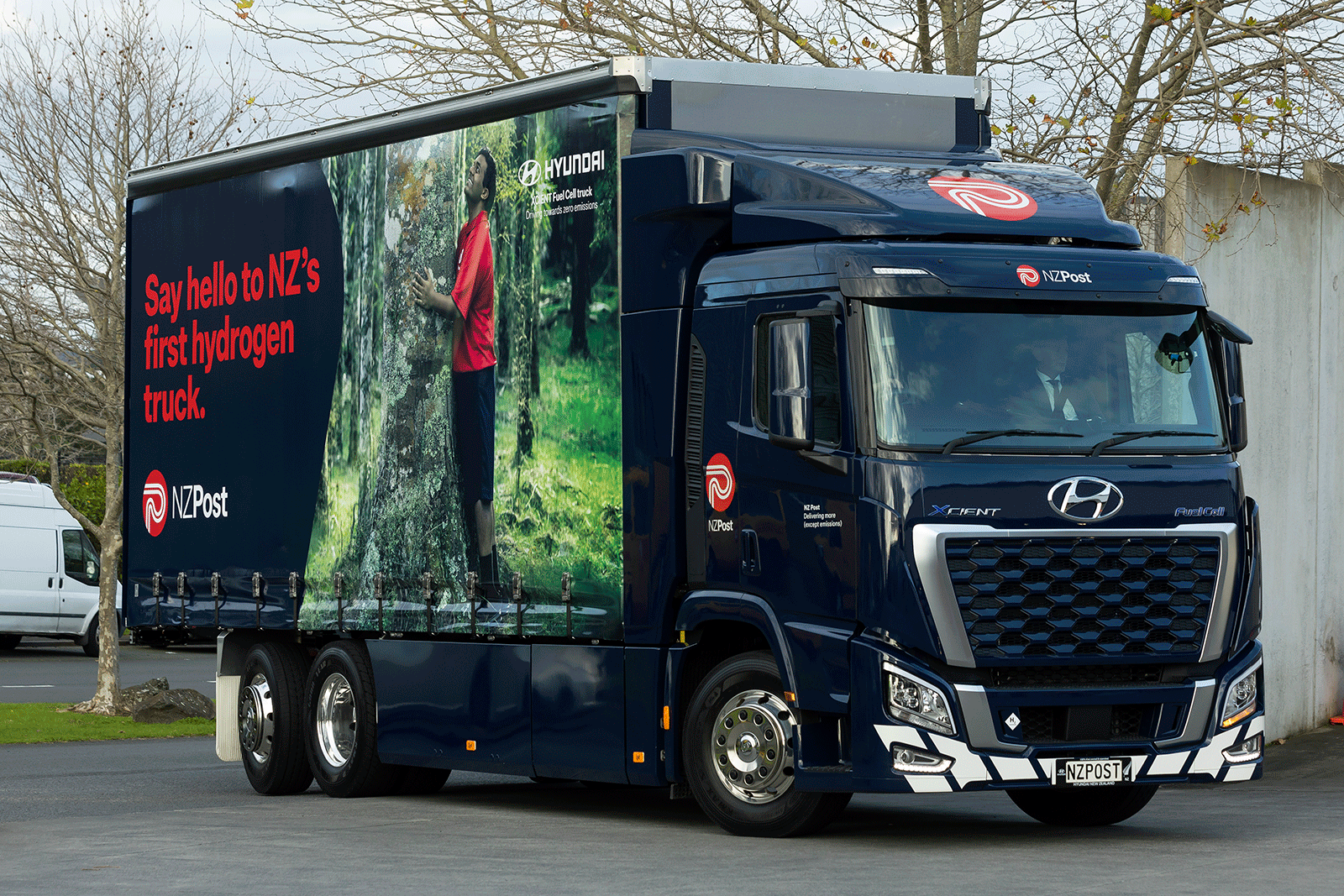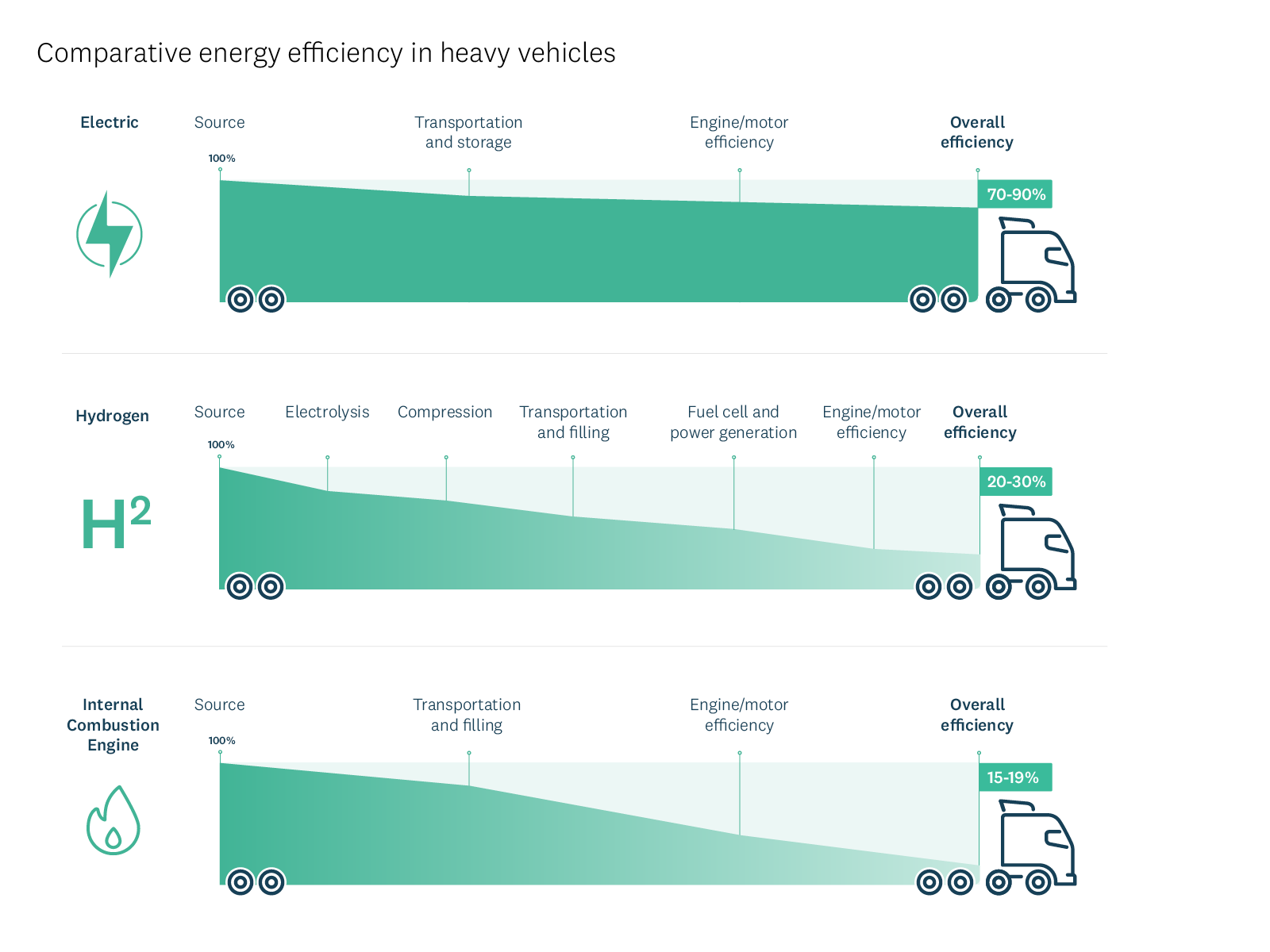Hydrogen energy in New Zealand
Hydrogen is being explored internationally and domestically as a way to decarbonise a range of applications, particularly heavy transport and hard-to-abate industrial processes. Alongside direct electrification, it has the potential to play an important role in our energy transition.
How does hydrogen energy work?
Hydrogen is an element that is naturally found in compounds (e.g. water, which is a compound of hydrogen and oxygen) in the form of liquids, gases or solids. Hydrogen can be used as an energy carrier (to store and transport energy) but is not an energy source like solar or hydro. Hydrogen can be produced by separating it from different sources such as water, fossil fuels or biomass. Once separated, the hydrogen is used as energy storage, chemical feedstock (e.g. fertiliser), or fuel.
Once the energy is stored as hydrogen, it can be released to power applications through combustion or by utilising a fuel cell. Combustion involves burning the hydrogen, similarly to natural gas. Utilising hydrogen fuel cells involves feeding hydrogen through a membrane which combines the hydrogen with oxygen in the air to produce electricity and water.
Green, blue and grey hydrogen
Some types of hydrogen production are more environmentally friendly than others, as illustrated in the image below.
Grey hydrogen (produced using natural fossil gas) is currently used to an extent in New Zealand, as zero carbon green hydrogen is not yet readily available. The largest hydrogen users in New Zealand use grey hydrogen where natural fossil gas is split using a process called steam methane reforming to extract the hydrogen, producing significant carbon emissions in the process. Hydrogen produced using emissions intensive methods like steam methane reformation is commonly referred to as blue hydrogen where some of the CO2 produced is captured.
Green hydrogen is hydrogen produced by electrolysis, a process that uses electricity to split water into hydrogen and oxygen. Hydrogen is considered ‘green’ when the electricity used is from renewable sources. Green hydrogen is a clean energy carrier that has the potential to play a role in a low-emissions economy – particularly to replace existing grey hydrogen use as well as fossil fuels in some industries.
Many countries – including New Zealand – are investing in the research and development of green hydrogen production and applications for use, which is allowing the technology to continue to improve and its uses understood.

The future of hydrogen energy in New Zealand
Hydrogen is used as a chemical input in many non-energy applications across several industries in New Zealand.
The most promising potential use case for green hydrogen in the near-term is to replace the grey hydrogen already used in hard-to-abate sectors where there are practical limits. Globally, applications for hydrogen and its derivatives like ammonia and methanol that are being explored include heavy transportation, auxiliary vehicles, medium-haul aviation, marine transport, steel production, chemical manufacturing, and electricity system services such as back-up power generation.
EECA is supporting work led by the Ministry of Business, Innovation and Employment (MBIE) and other relevant agencies to further explore the potential use of green hydrogen in New Zealand.

Advantages and limitations of green hydrogen
Advantages
Renewable and can be clean
- Green hydrogen is made from water, and turns back into water when used, so it won’t run out.
- Green hydrogen from renewable electricity is a clean energy source both at generation and at consumption.
- The use of hydrogen in fuel cells emits only water, with no particulates or oxides of sulphur (SOx) or of nitrogen (NOx).
Energy dense on a mass basis
- One kilogram of green hydrogen contains the same amount of energy as 2.8 litres of petrol. However, it has a lower energy density on a volumetric basis, and storing hydrogen typically requires specialised – and larger – tanks to hold the gas under high pressure, making it less efficient overall.
Versatile
- Green hydrogen can be used in certain areas across various industries, including for chemical feedstock (e.g. fertiliser), mining and process heat. It can also be stored and consumed in other forms – such as methanol which has potential as a marine fuel due to its high energy density (about 10x a lithium-ion battery).
- Use of hydrogen fuel cells in heavy vehicles in the transport sector is an area where hydrogen could potentially play a role in New Zealand. For heavy vehicles, hydrogen fuel cell heavy vehicles may offer advantages over battery-powered alternatives as they could be faster to refuel and are lighter which allows for higher payloads and less downtime.
Dispatchable
- There is an ability to store hydrogen and therefore provide dispatchable energy when required. As dispatchable energy, hydrogen could have different uses for New Zealand’s energy and electricity systems, in particular to help improve the resilience of the electricity system. Hydrogen could be produced during periods of low electricity demand and could be stored and dispatched to help support the security of demand response energy supply on an intra-day or intra-seasonal basis. Uncertainty persists around whether improvements in costs and efficiencies of hydrogen production, storage and power generation will allow it to compete economically with other dispatchable electricity technologies.
Limitations
High cost of production and related infrastructure
- Green hydrogen is currently expensive to produce, which limits its commercial viability as a replacement for fossil fuels or alternative to direct electrification (which is more efficient). While estimates vary across sources, GNS reports that production costs will need to decrease by around 75% from 2021 costs of around NZD $8/kg to around $2/kg to be commercially viable.1 While theoretically this is possible, other considerations will need to be taken into account such as transport costs, maintenance and return on capital.
- A frequently suggested use case for green hydrogen is heavy road transport. However, due to the high energy demands of these vehicles, their costs are usually mostly operational (rather than capital). With the current high cost of producing green hydrogen, a hydrogen vehicle’s operational cost is much higher than an equivalent battery electric vehicle. Applications to EECA’s Low Emission Transport Fund have also shown a higher capital cost for hydrogen vehicles at an average of $1million, compared to $250,000 for a diesel equivalent and $700,000 for an electric equivalent. This suggested use case may struggle to be feasible in the highly competitive road freight sector.
Transportation, storage, and safety issues
- The best method of transporting green hydrogen and storing it on a large scale is not yet clear as there are concerns around the efficiency, safety and cost involved.
- Both leading storage options require a large amount of energy – gaseous form requires compressing the gas to either 350 or 700 bar, whereas liquid form requires the hydrogen to be kept at –253°C. While storing and transporting hydrogen in other forms (such as methanol) can be easier to transport, there are energy losses through the conversion processes that should be considered.
- Hydrogen is a small molecule that can diffuse through metal surfaces, which may cause embrittlement of piping materials used to transport the hydrogen. Therefore, high grade steel pipes need to be used to transport hydrogen.
Inefficiencies compared to direct electrification
-
Around 40% of the energy is lost when renewable electricity is converted into hydrogen. In the context of using it in vehicles to replace gas or diesel, there are significant losses during compression and transport, as well as when converting the hydrogen back to electricity in the vehicle to provide motive power. Once these losses are added up, hydrogen has an end-to-end efficiency of approximately 20-30%. In comparison, battery electric vehicles have an end-to-end efficiency of around 70-90%. This means that the most promising uses for hydrogen are likely to be for applications where electrification is infeasible or impractical.

EECA and Hydrogen
EECA continues to work closely with MBIE and other government agencies and is supporting the development of the Hydrogen Roadmap which will feed into the Government’s New Zealand Energy Strategy that will be pivotal in informing any future large-scale hydrogen operations.
EECA’s Low Emission Transport Fund has already supported several proof-of-concept green hydrogen projects, including light hydrogen fuel cell vehicles, heavy hydrogen fuel cell trucks, a hydrogen fuel cell bus, and hydrogen-diesel hybrid trucks. EECA also has delivery oversight of the Infrastructure Reference Group’s Minimum Viable Hydrogen Refuelling Network project, which is delivering four green hydrogen refuelling stations and 20 heavy hydrogen fuel cell trucks. This ongoing work will help inform the future direction of hydrogen use in New Zealand – including whether it is viable in the competitive heavy transport sector.
The results and insights from these existing projects will be critical in shaping any future potential role for hydrogen in decarbonising the transport sector, as well as any future investment. EECA will also integrate the lessons from these projects into our input during the development stages of government’s Hydrogen Roadmap and wider Energy Strategy.
-
Government strategy
Read more about the work government is currently doing to explore the potential use of hydrogen, on the Ministry of Business and Innovation website.
-
Technology study
This 2019 Concept Consulting study explores how hydrogen technologies could be used in New Zealand. EECA contributed to the funding of the study in conjunction with other organisations including the Ministry of Business Innovation and Employment (MBIE), Meridian Energy, First Gas, Powerco and Contact Energy.
